#burial customs
Text

burial custom depicted in Les Contrees mysterieuses et les peuples inconnus (1884)
3 notes
·
View notes
Text
Plato defined the ideal of any Greek as to be rich, healthy and honoured; to live to a grand old age; to bury his parents with honour, and ultimately to be buried in turn by his own children with due respect.
Burial Customs, the Afterlife and the Pollution of Death in Ancient Greece by Louise Cilliers and Francois Pieter Retief
#quote#ancient greece#plato#burial customs the afterlife and the pollution of death in ancient greece#louise cilliers#francois pieter retief#dark academia#light academia#classic academia#aesthetic#death#burial customs#classics#classics studies#dark things
3 notes
·
View notes
Text
https://www.tcd.ie/tceh/blogs/vikings.php

Author Tenaya Jorgensen
What happens if when archaeologists excavate a Viking grave, but find no body inside? Are the grave goods found within enough to determine the identity – either sex or gender - of the individual? Perhaps it is time for archaeologists and historians to challenge their assumptions regarding the relationship between artefacts and gender. In order to move forward, we must also look back by re-examining the corpus of existing identifications and the reasons why those identifications were made in the first place.
My PhD dissertation is not about sexuality and gender. I had not intended to take a strong stance on gendered-issues, as my thesis attempts to chart an interdisciplinary macro-history of the Early Viking Age (790-920 AD). As such, there seemed to be little room within my area of study for the finer ruminations required for the discussion of identity politics.
But then I began to catalogue Viking Age Graves across Western Europe, and what I found - well, it bothered me. Of the 64 burial sites in Ireland, only 33 of these sites contained human remains. Of the remaining 31, the cemeteries and single burials were identified solely through grave goods. Similarly, in Scotland, 31 burial sites out of 60 evidenced human remains. The other 29 were, again, identified by Viking Age objects.
Why do we sex and gender Viking graves that contain no bodies?
While it is understandable that graves may be correctly identified through the use of grave goods, I was struck by the confidence with which scholars identified burials as either ‘male,’ or ‘female,’ depending on the assemblage provided.
For example, in the 1940s, Sigurd Grieg compiled Viking Antiquities in Scotland for Haakon Shetelig’s six volume compendium on Viking Antiquities in Great Britain and Ireland(1). Although now over eighty years old, Grieg’s work remains the most comprehensive survey available on Viking Age burials in Scotland. Only a few individual corrections have been made, but Grieg’s survey as a whole has not received any extensive updates, and these updates are much needed.
Grieg states that in 1862, “the skeleton of an aged man, interred with a sword and possibly with a shield,’ was excavated at Ardvonrig, on the Isle of Barra, in Scotland. Also discovered were a tortoise brooch, bronze brooch, bronze peninsular brooch, and a needle case, “evidently belonging to a woman’s grave.” The problem is, only one set of human remains was found. Despite the lack of a second body, Grieg stated that the “mound probably contained a double grave for a man and a woman.”(2) His assumptions were based only around the suggestion of weapons within the grave - no other justification was provided.
Fast forward to 1990, when Kate Gordon at the British Museum re-examined the excavated objects. She ultimately determined that the sword was not, in fact, a weapon, but a weaving sword/baton, while the shield was a pair of heckles, which are also textile equipment. Armed with the findings of her reanalysis, Gordon suggests that the individual buried at Ardvonrig, “in absence of osteological sexing, was almost certainly a female.”(3)
However, even Gordon’s reanalysis bothered me, for why must the individual buried on the Isle of Barra have been almost certainly a female? Marianne Moen’s 2019 PhD thesis, Challenging Gender: A reconsideration of gender in the Viking Age using the mortuary landscape, brilliantly examines this question by analysing common practices and separating exceptions from the rule.(4) That is to say, while women are often buried with textile equipment, and men are often buried with weapons, that does not mean that it is always so. This, of course, brings up a further difficult point regarding sex and gender. According to Jennifer Tseng in the American Medical Association Journal of Ethics, “sex refers to the biological differences between males and females. Gender refers to the continuum of complex psychosocial self-perceptions, attitudes, and expectations people have about members of both sexes.”(5) The former is much more straightforward - if we have a body, that is.
Gendered practices in Viking graves
There can be no conversation about gendering burial practices without mention of the Birka warrior. In 2017, archaeologists confirmed that a burial containing weapons could be positively associated with a female skeleton (Bj.581) through DNA analysis.(6) Response to their publication was swift, and the debate centered around whether the presence of weapons conclusively affirmed that the woman was, in fact, a warrior. The authors, with the addition of Neil Price from Uppsala University, offered a more nuanced take in 2019 when they published, ‘Viking warrior women? Reassessing Birka chamber grave Bj.581.’ While the first article meant to primarily address the genomic analysis, the latter article took greater care in examining the implications of both Viking Age funerary practices and archaeology, and ‘the ways in which we engender the societies of that time.”(7)
So how do we engender the Viking Age? Our representations of the Viking Age are coloured by societal norms of the 20th and 21st centuries - especially in popular culture and outside the confines of a sometimes rather sterile academic environment. That is to say, male biological sex was often synonymous with a man’s gendered identity, and that the role of a warrior was exclusively associated with men and males. As the authors of ‘Viking warrior women?’ themselves acknowledge, ‘the same interpretation [that the body of the warrior belonged to a man] would undoubtedly have been made had no human bone survived at all.’ While these authors suggest that this automatic conflation between men and swords was a product of its time (i.e., the late 19th century), they fail to acknowledge that these types of genderings are still occurring. Furthermore, we know these associations are still occurring today, because the survey of Ireland’s Viking Graves was only published in 2014, and in this survey, bodiless weapon burials are gendered as male.(8)
If we think twice about suggesting the presence of a male when a sword is discovered, can the truth also be said in reverse? If textile equipment is excavated, such as the baton and heckles found on Isle of Barra, does this mean we must automatically attribute the burial to a woman? While no biologically male burials have currently been identified with textile tools, many of the sites contain bodies of indeterminate sex - or simply no bodies at all. Furthermore, what of burials that contain both textile equipment and weapons, but with remains too insubstantial to be analysed for sexing? Moen states the simple and obvious truth: “we are simply asking the wrong questions. Perhaps less rigidity in expected gender roles may be the answer to how to interpret such apparently transgressive burials.”(9) Perhaps less rigidity in sexing burials is needed as well - for we have no sex without a body, and gendering burials based solely on grave goods can only limit our understanding of the people who lived during the Viking Age.
#early medeival scandanavia#vikings#history#burial customs#death customs#early medieval#gender#death and gender
5 notes
·
View notes
Text
Headcanon: Wompy Bear
Wompy bear was the first toy he’d received from his mother, and the only physical thing he has left of his parents. Once they perished and Yzma was left to raise him, she ordered most of their belongings to be dumped into the sea as a ‘tribute’ to them, under the ancient custom that an Emperor is to carry their belongings into the next life. In reality, she was having it destroyed to make it easier for her to pave her way into becoming an Empress.
But Kuzco held on to Wompy for dear life and refused to give him up for any reason. He would bring it everywhere with him; to meals, to baths, to ceremonies and then when he was slightly older, to meetings and tutoring sessions.
Royal staff, upon realizing how important the stuffed toy was, made replicates that they would switch it out with when Wompy needed washed or mended. Kuzco as a child didn’t exactly notice the difference, but as he became older and more aware of what they were trying to do, he allowed them to take him from him and pretended as if it didn’t affect him, not to have him. Though he always made sure to get it back when they were finished.
It became a comfort item for him, and even now that he’s an adult he holds onto it for comfort and reassurance in difficult times, or when he’s very afraid. This of course isn’t something he readily shares with anyone; he does have a fearless, arrogant, vain Emperor image to keep up, after all.
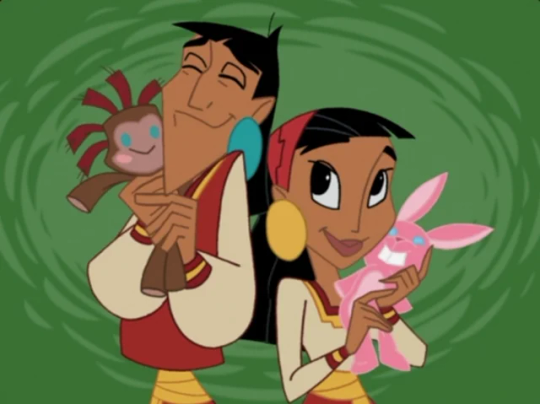
#kuzco#disney rp#the emperors new groove#roleplayer#the emperors new school#Wompy Bear#Headcanon#MENTIONS:#Yzma#Kuzco's Dad#Kuzco's Mom#TRIGERRS:#Mentions of Character Death#Burial Customs
1 note
·
View note
Text
#revenants#burials#vampires#mythology#folklore#folkways#burial customs#revenant#vampire#sickle#lock#17th century#europe#european mythology#poland#vampirism#upiór#wampir#Bydgoszcz#padlock#brick
1 note
·
View note
Text
Seven-Foot Sword Unearthed From 1,600-Year-Old Burial Mound in Japan | Smart News| Smithsonian Magazine
0 notes
Photo
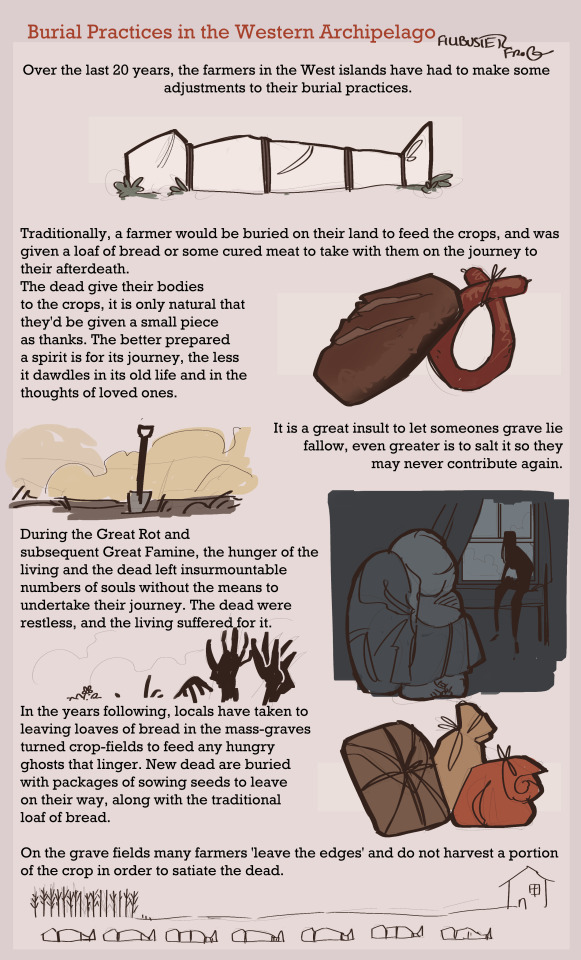
some burial customs
(big thanks to @theee-j for helping me w/ this one)
#my art#worldbuilding#i know ppl want things like tiefling and dragonborn burial customs but this is all i have after licherally years of trying to crack it#anyway i thought this might make a cool setting for a oneshot or smth
4K notes
·
View notes
Text
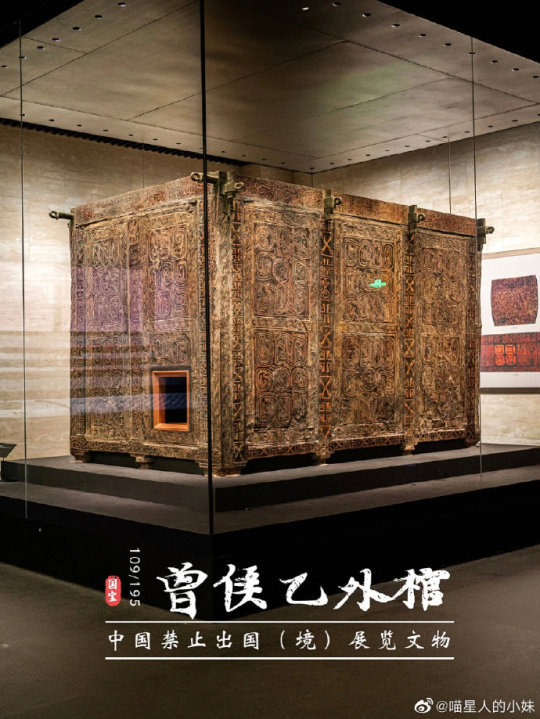

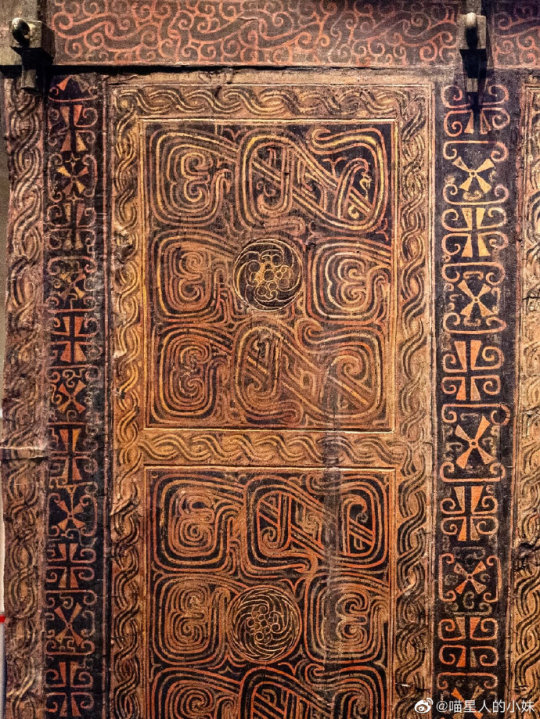
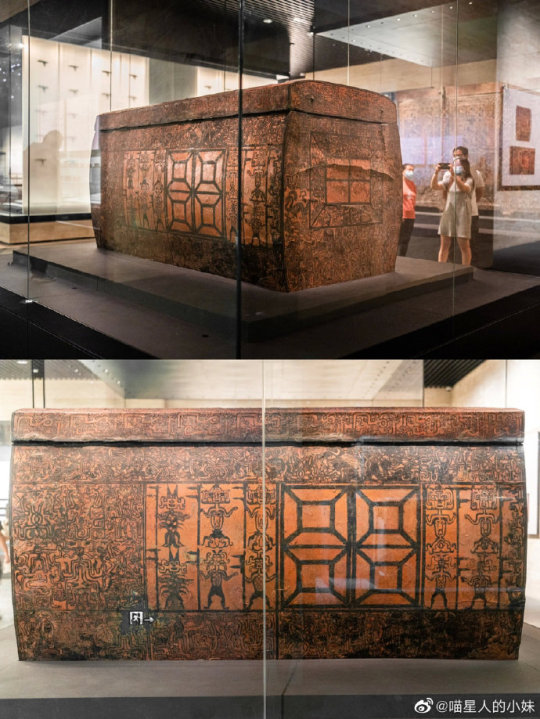
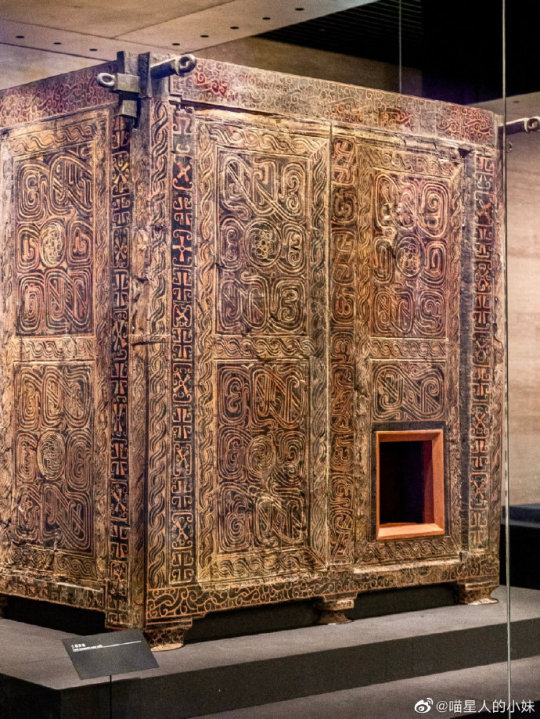

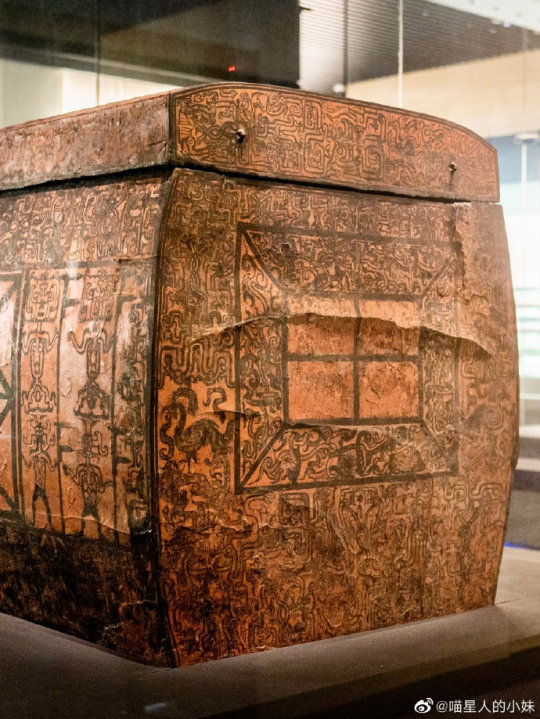
Luxury Lacquered Coffin of Marquis Yi: Largest in History
The coffin of the Warring States period was unearthed from the tomb of Marquis Yi of Zeng (曾侯乙) in Leigudun (擂鼓墩), Suizhou, Hubei, in 1978.
The outer coffin is 3.2 meters long, 2.1 meters wide, 2.2 meters high, and weighs about 7 tons. It is composed of 10 copper columns embedded within 10 wooden boards of the same height. The painting on the surface of one of the coffins depicts weird and armed anthro-zoomorphic beings.
Displayed in Hubei Provincial Museum (湖北省博物馆).
Photo: ©喵星人的小姐
#ancient china#chinese culture#chinese art#chinese history#coffin#ancient tomb#burial#warring states period#warring states era#artefact#lacquer#曾侯乙墓#laquerware#tomb art#archeology#chinese customs
301 notes
·
View notes
Note
What were the traditions of the British sailory in regards to burying their dead? I heard there was something with burying tiny dolls on land?
Hi,
usually the deceased was sewn into his hammock, often with a cannonball at his feet, and then dumped into the sea. If the person died at sea. At home there were several ways to commemorate a deceased person and so the small dolls in coffins in Scotland were probably also part of this custom. However, it is not entirely clear whether this was really the case.

This custom seems to have had its roots in Germany in the 18th century (possibly much earlier), where Sailor keeping mandrake roots or dolls in tiny coffins as talismen, he postulated that the coffins were a hoard of lucky charms. And that death, when it came, first took the doll before it took the person himself. In Scotland in the 19th century, and even earlier, these dolls were buried as lucky charms for all sorts of things, but could also be buried by widows or mothers as a substitute for their now lost husband or son, in order to guarantee a Christian burial. So several things are possible and seem to be limited to these two countries.
91 notes
·
View notes
Text
From impressive, golden masks to painted plaster portraits and cartoon-like, smiling faces, funerary masks have been created throughout history to symbolize and honor the deceased.
26 notes
·
View notes
Note
Hello, I saw your ask about rocks on tombstones, and you mention that "according to Jewish law no one wants to excavate it, because it's not necessary knowledge", and I wanted to ask you about the Not Necessary Knowledge part. Does it refer only to tombs, or is it part of a bigger philosophy? And if so, could you tell me more about it or what to read up on?
Att. a goyim that could learn to let go unknown knowledge when it's not necessary.
Disturbing someone's grave is against Jewish law, unless it is absolutely necessary to prevent harm to others or if the body was buried temporarily/the cemetery is going to come to harm, and it needs to be relocated.
(Examples:
-A body is exhumed to re-examine their cause of death to lead to the conviction of a murderer, so that the murderer can no longer hurt others.
-A cemetery is found during construction of a new highway, and the bodies must be reburied so that they can be given the proper respect.
-A person was buried temporarily in the diaspora, but ultimately wishes to be buried in Israel, and so as soon as they can, their family exhumes the body and re-buries it in Israel.
-A person was buried in a grave in a non-Jewish cemetery, but it was discovered they were Jewish, and they are re-buried in a Jewish cemetery. )
There is no urgent need to find out who is buried in the historic Jewish cemetery, even if one is curious, and thus the land isn't going to be excavated to check because that would be needlessly disturbing someone's grave. The people buried there have already been laid to rest, and the cemetery is still consecrated as a Jewish cemetery and is given the proper respect, and is currently under no danger of demolition.
Respect of the dead is deeply important in Jewish law, and there are specific laws regarding the handling of a dead body, burial, and behaviour at a gravesite. Jewish gravesites are considered to be eternally consecrated, and indeed many people visit the gravesites of great leaders and family members to pray and ask the souls of the deceased to speak to G-d on their behalf. In Jewish law, it doesn't matter how long someone has been dead or who they are, they must be respected.
*Also it's "goy", not "goyim" if you're referring to yourself, and I'd rather gentiles not refer to themselves as that unless they have been specially permitted to do so by a close Jewish relative or friend (because "goy" is also a white supremacist dogwhistle)
92 notes
·
View notes
Note
Hi! I saw your tags in that post about identifying skeletal remains, and what is the book you mentioned about gender? Do you have any other you recommend about gender marks in burials or gender in history? This sounds amazing, now I want to read more about it!
Hey!
Yeah, I was referring to Neil Price's Children of Ash and Elm: A History of the Vikings. I believe he also gets into it a little bit in his The Viking Way: Magic and Mind in Late Iron Age Scandinavia, but it's been a while since I've read it (still recommend as an overall text on magic in the time - also for anyone who has read my Grima stuff and thought: huh, that seidr shit sure is interesting). He's very good at saying archeologists can, at best, determine the sex of remains but gendering them is beyond the reach of science.
A small excerpt from Children of Ash and Elm to give you a flavour of his approach (any grammar or punctuations errors are mine):
However, in many cases the deceased were created an the resulting ashes are hard to sex reliably. More often, presercation conditions in the soil are unfavourable for the survival of bone in any state, and there are many graves without human remains at all (although they were evidently originally present). In these cases, for centuries archeologists have resorted to determining the sex of the dead through associated with supposedly gendered objects--this weapons in a grave are held to suggest a man, jewellery sets donate a woman, and so on. Beyond the obvious problem of conflating sex and gender, and also effectively sexing metal, these readings risk simply piling one set of assumptions on another in what forensic-decision-makers call a 'bias snowball' of cumulatively questionable interpretations. Clearly this is unsatisfactory, and at worst can lead to a potentially vast misreadying of Viking-Age gender from the literally tens of thousands of burials that have been analysed in this way over the years.
[...]
At Vivallen in Swedish Harjedalen, there was even a male-bodied person buried according to Sami rituals, in a Sami settlement, but wearing conventional Sami man's equipment over a Nordic woman's linen dress, complete with jewellery to match--a crossing of both gender and cultural norms.
Some additional resources to consider (there are more Neil Price pieces in this list since early medieval Scandinavian burial practices are a cornerstone of his research). It's a mix of books and journal articles as well as a mix of more "layman" friendly and more true-academic texts. For the journal articles, I'm not sure if you're associated with a secondary educational institution, but some local libraries will grant access to online academic journals, as an FYI.
(Apologies in advance for the lack of correct accents and other things on names (e.g., Th instead of the proper thorne), I'm working with a north American keyboard and doing this off the corner of my desk at work, so to speak)
---
Stfean Brink, Neil Price, The Viking World
Hilda Ellis, The Road to Hel: A Study in the Conception of the Dead in Old Norse Literature (this is a broad study of death rituals in the era, not really gender-archeology focused, but it's 100% worth the read and very thorough)
Anders Andren, Jens-Peter Schjodt, and John Lidow, Pre-Christian Religions of the North: Histories and Structures (Neil Price has a good essay/chapter contribution in here on death & mortuary behaviour)
Howard Williams, Death and Memory in Early Medieval Britain
Marianne Moen, Matthew J. Walsh, "Agents of Death: Reassessing Social Agency and Gendered Narratives of Human Sacrifice in the Viking Age," Cambridge Archaeological Journal, 2021
Leszek Slupecki, Rudolf Simek, Conversions: Looking for Ideological Change in Early Middle Ages (has some stuff of "deviant" burial customs and concepts of the "dangerous dead" - stuff I fucking wet myself over, honestly)
Andrew Reynolds, Anglo-Saxon Deviant Burial Customs
Joanne O’Sullivan, "Strung Along: Re-evaluating Gendered Views of Viking-Age Beads," Medieval Archaeology, 2015
Judtih Jesch, Women in the Viking Age (note: it's from the early 90's and very much reflects academic gender and feminist work at that time - still always worth reading older texts for the sake of good historiography alone. Also to see what has been explored before and why we might have new approaches, or to see wher current views originated etc)
Sarah Tralow and Liv Nilsson Stutz, The Oxford Handbook of the Archeology of Death and Burial
Duncan Sayer, Howard Williams, Mortuary Practices and Social Identities in the Middle Ages
Charlotte Hedenstierna-Jonson, Anna Kjellström, Torun Zachrisson, Maja Krzewińska, Veronica Sobrado, Neil Price, Torsten Günther, Mattias Jakobsson, Anders Götherström, Jan Storå, "A female Viking warrior confirmed by genomics," Wily Online (link to article, it's open access)
Jacob Bell, "Magic, Genderfluidity, and queer Vikings, ca. 750‐1050," History Compass, 2021
Isabelle Algrain, "Gender and diversity in archaeological contexts," Revista Arqueologia Pública, 2021
Thora Petursdottir, "Icelandic Viking Age graves: Lack in material--lack of interpretations?", Archeologia Islandica, 2009
Anna Wessman, "Death, Destruction and Commemoration: Tracing Ritual Activities in Finnish Late Iron Age Cemeteries," Finnish Antiquarian Society, 2010
Ahmad ibn Fadlan was a 10th century Muslim traveler/explorer who visited these areas and wrote about it. You can find various translations of his works around. He has a description of at least one burial and related practices. Also some fun descriptions of sexual/fertility rituals though he sadly "fades to black" before the good stuff starts.
----
I hope this helps! I am always very excited to talk about anything related to early medieval Scandinavia (also early modern Europe) and so always happy to get these asks <3 <3
#history#vikings#early medieval scandanavia#nordic history#medieval#early medieval#burial customs#death customs#ask#reply#anon
2 notes
·
View notes
Text
While you’re thinking about the Roman Empire, I’m stuck on the Danish Swan Wing burial and probably will be forever.
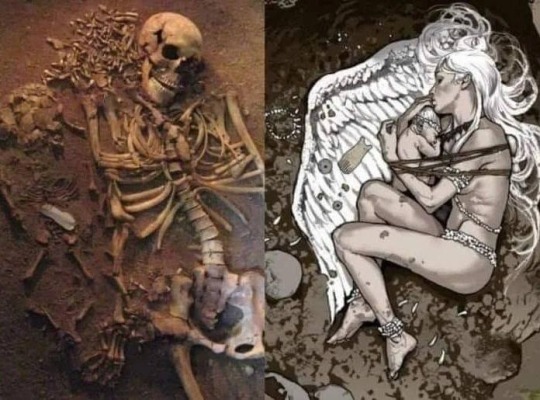
art credit: Adam Brockbank
14 notes
·
View notes
Text
I can't find the original post I'm responding to with this one (sorry original OP) but way back there was a very excellent post about Harrow which pointed out that its kind of telling that John claims to be aiming to resurrect the dead Earth... but the Houses are nothing like any Earth culture really. All that's left is stray memes...
But I was thinking about it and like... one guy. No matter how hard you tried or how good your intentions, how much of real history and culture could any single person really preserve. Even with good access to things like records (which I get the sense would not have been an option based on what we've seen from Nona), really, how much could you do?
And its been 10,000 years. 10,000 years is and incomprehensible timespan. Absolutely boggling. That takes us to... if my math is correct... 8000 BCE. I'm not an archaeologist, but based on Wikipedia, that gets us to... about the time grain agriculture was invented, but before the invention of cities. It is, still according to Wikipedia thousands of years before the earliest evidence of human life in Aotearoa.
How many of those people's memes do we have? I asked @pinkcupboardwitch who is both an excellent classicist and kind about my insane questions, and she confirms that we don't really know what stories they told, memes they shared or gods they worshipped. We have archaeology, but they haven't persisted in an unbroken way.
I'm not sure exactly where I'm ending this, except that this sort of thing is why I wouldn't be able to cope with being an archaeologist.
#she also told me about burial customs in catalhoyuk which made me need to have a lie down but that's a different post#the locked tomb
63 notes
·
View notes
Text
During the moment of death, the soul (psuche) leaves the body via the mouth or, if appropriate, via an open war wound. According to Homer other elements, namely the thumos (from the heart) and the vital spirit (aion) in the case of young people, also escape from the body but play no further role. The corpse which remains simply decomposes and is of no further importance.
Burial Customs, the Afterlife and the Pollution of Death in Ancient Greece by Louise Cilliers and Francois Pieter Retief
#quote#ancient greece#burial customs the afterlife and the pollution of death in ancient greece#louise cilliers#francois pieter retief#dark academia#classic academia#aesthetic#death#classics#classics studies#dark things#homer#bodymind#soul
4 notes
·
View notes
Text
love watching stuff about a topic im not super familiar with bc theyll say smth as if its a huge revelation that completely shocked the whole field and im just sat here like "ok? this seems really normal honestly"
#but like i really dont get it why Wouldnt another hominin be capable of burials ?#neanderthals also had some kinds of deliberate burials and associated customs so why not others ?#unless maybe this was the First time they found evidence of any other hominins engaging in burial rites#even then idk im confused obviously itd be an amazing discovery#but to be like Wowee They Were Capable Of Thoughts And Customs seems weird#maybe i should just watch more than five minutes of this and they will answer my stupid questions 👍
2 notes
·
View notes